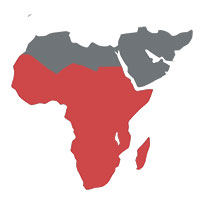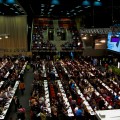Durban: What’s the Down Low?
admin | November 28, 2011.
Standing ovations finished the Cancun COP16 climate negotiations. The echoes of the Cancun applause have now worn off, and it’s time for hard decisions to be made at COP17 in Durban, South Africa. While the urgency has never been greater, the hurdles are harder to clear.
To a standing ovation, near consensus was reached on the final night of the COP16 despite Bolivia’s objections. The Framework Convention on Climate Change (UNFCCC), widely seen as the only way to coordinate global action on climate change, had saved itself from irrelevance following the aftermath of Copenhagen. The catch-cry of the conference, “We cannot let the perfect become the enemy of the good,” was repeated time and time again by nations supporting the Cancun Agreement. After the cold bitter disappointment of Copenhagen, the warmth on the final night at Cancun was a welcome change to recent negotiations.
But that warmth didn’t last long. Over the last twelve months, the Cancun Agreement has come under threat, and again the UNFCCC faces questions over its ability to act on the climate crisis.
The Kyoto Protocol ends in 2012, leaving the world without a global treaty on reducing greenhouse gas emissions. No one expects a legally binding treaty for emission cuts to emerge at Durban. Countries such as Japan, Canada and Russia do not want a second commitment period of Kyoto.
A breakthrough such as a global treaty emerging from Durban is highly unlikely. Instead, realists are pushing for a strong mandate and roadmap for a new global treaty, much like the 2007 Bali Road Map; a process which led to the broken hope at the Copenhagen negotiations. Durban is aiming for an agreement by 2015 for implementation by 2018, or later agreement as nations such as the UK are advocating. In designing such a mandate, nations need to overcome the faults and conflicts of the Bali and Copenhagen negotiations, to prevent a repeat of Copenhagen when it will be too late.
The Green Climate Fund (GCF), a $100 billion per year fund established to help developing countries move to clean energy, has hit a roadblock with the USA and Saudi Arabia. Currently the GCF is an “empty shell”, with a transitional committee set up at Cancun unable to reach consensus on the how such a fund would operate.
Parties at COP17 can approve the recommendations of the transnational committee, and establish funds for the GCF as soon as possible. If they don’t, the GCF must go back to the wider COP, where it will be open to ongoing scrutiny, thus holding it down for another year. Questions still linger over the trustee of the fund, currently nominated as the World Bank and the role of private entities.
All this is being negotiated in the context of numerous major reports from NGOs warning of ever increasing dangers of climate change and the reactionary responses, this year featuring the Climate Gate 2.0 email leaks. Yet despite the usual politicising of climate science, the urgency of Durban is clear—the usually conservative International Energy Agency recently reported that a lack of a global enforceable treaty on climate change by 2017 would greatly increase the risks of dangerous levels of global warming.
While the unresolved issues of a post-Kyoto agreement and the GCF will come to define Durban COP17, there are many essential decisions nations need to make in order to effectively combat climate change. Durban is a crucial turning point for the world. The opportunities to continue the global rapturous applause which ended Cancun cannot be missed at Durban. No longer is it just the UNFCCC process at stake. The future of enforceable global action on climate change and the clean development of the majority world are on the line. Durban cannot be about delay. Too much is at stake.













comment